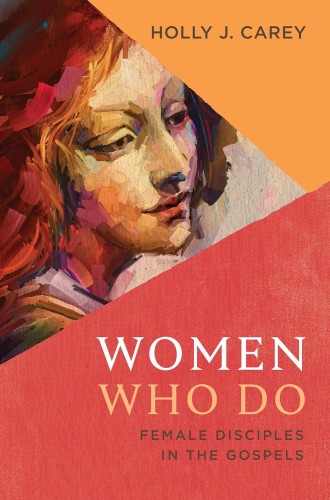Overshadowed by the Twelve
Holly Carey turns up the brightness on the most faithful disciples in the gospels: the women.

Women Who Do
Female Disciples in the Gospels
Whenever I set up a new TV, part of the process involves calibrating the screen’s brightness. If the screen is too dark, I’ll miss out on things that are visible but hard to see. Turning up the brightness brings clarity and depth to the picture, revealing things that might otherwise have escaped my notice.
That is a lot like my experience reading Holly Carey’s new book. I grew up being taught that the gospels, with their focus on Jesus and the original 12 disciples, were essentially stories about men (with a few demons and angels in the mix). I’ve changed my mind since then, but I’ve still wondered why Jesus in the gospels calls men to be his disciples and not women. Thankfully, Women Who Do has opened my eyes to see women everywhere in the gospels. They believe in Jesus, serve Jesus, obey Jesus, and share about Jesus with others. All the while, the infamous Twelve often appear to be confused, worried, absent, and even dismissive of Jesus.
It’s true that the four evangelists don’t explicitly refer to any women as disciples (in Greek, mathētēs). It’s also true that the Twelve are all men. And yet, Carey points out that Jesus’ circle of students is much larger than 12. She proves this quite handily by pointing to the end of Matthew’s Gospel, where it mentions that Joseph of Arimathea is also a disciple of Jesus (27:57). Also? I’d never noticed that little word (kai) before. It implies that there’s a previously mentioned group of disciples in which Joseph should be included. And who does Matthew name in the verses just prior to this one? The women who show up to the crucifixion (27:55–56). Joseph is being included as a disciple of Jesus along with these women.




